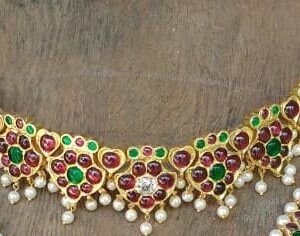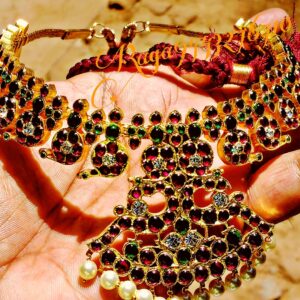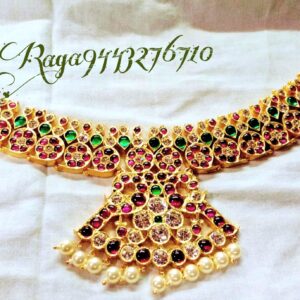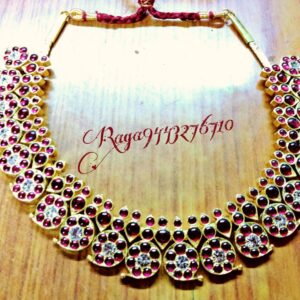Showing 133–144 of 261 results
-
Quick View
he earliest known Jewellery was actually created not by humans (Homo sapiens) but by Neanderthal living in Europe. Specifically, perforated beads made from small sea shells have been found dating to 115,000 years ago in the Cueva de los Aviones, a cave along the southeast coast of Spain.
-
Quick View
he earliest known Jewellery was actually created not by humans (Homo sapiens) but by Neanderthal living in Europe. Specifically, perforated beads made from small sea shells have been found dating to 115,000 years ago in the Cueva de los Aviones, a cave along the southeast coast of Spain.
-
Quick View
he earliest known Jewellery was actually created not by humans (Homo sapiens) but by Neanderthal living in Europe. Specifically, perforated beads made from small sea shells have been found dating to 115,000 years ago in the Cueva de los Aviones, a cave along the southeast coast of Spain.
-
Quick View
“The Necklace” or “The Diamond Necklace” (French: La Parure) is an 1884 short story by French writer Guy de Maupassant. It is known for its twist ending (Ironic ending), which was a hallmark of de Maupassant’s style. The story was first published on 17 February 1884 in the French newspaper Le Gaulois.
-
Quick View
“The Necklace” or “The Diamond Necklace” (French: La Parure) is an 1884 short story by French writer Guy de Maupassant. It is known for its twist ending (Ironic ending), which was a hallmark of de Maupassant’s style. The story was first published on 17 February 1884 in the French newspaper Le Gaulois.
-
Quick View
“The Necklace” or “The Diamond Necklace” (French: La Parure) is an 1884 short story by French writer Guy de Maupassant. It is known for its twist ending (Ironic ending), which was a hallmark of de Maupassant’s style. The story was first published on 17 February 1884 in the French newspaper Le Gaulois.
-
Quick View
“The Necklace” or “The Diamond Necklace” (French: La Parure) is an 1884 short story by French writer Guy de Maupassant. It is known for its twist ending (Ironic ending), which was a hallmark of de Maupassant’s style. The story was first published on 17 February 1884 in the French newspaper Le Gaulois.
-
Quick View
“The Necklace” or “The Diamond Necklace” (French: La Parure) is an 1884 short story by French writer Guy de Maupassant. It is known for its twist ending (Ironic ending), which was a hallmark of de Maupassant’s style. The story was first published on 17 February 1884 in the French newspaper Le Gaulois.
-
Quick View
“The Necklace” or “The Diamond Necklace” (French: La Parure) is an 1884 short story by French writer Guy de Maupassant. It is known for its twist ending (Ironic ending), which was a hallmark of de Maupassant’s style. The story was first published on 17 February 1884 in the French newspaper Le Gaulois.
-
Quick View
“The Necklace” or “The Diamond Necklace” (French: La Parure) is an 1884 short story by French writer Guy de Maupassant. It is known for its twist ending (Ironic ending), which was a hallmark of de Maupassant’s style. The story was first published on 17 February 1884 in the French newspaper Le Gaulois.
-
Quick View
“The Necklace” or “The Diamond Necklace” (French: La Parure) is an 1884 short story by French writer Guy de Maupassant. It is known for its twist ending (Ironic ending), which was a hallmark of de Maupassant’s style. The story was first published on 17 February 1884 in the French newspaper Le Gaulois.
-
Quick View
“The Necklace” or “The Diamond Necklace” (French: La Parure) is an 1884 short story by French writer Guy de Maupassant. It is known for its twist ending (Ironic ending), which was a hallmark of de Maupassant’s style. The story was first published on 17 February 1884 in the French newspaper Le Gaulois.













